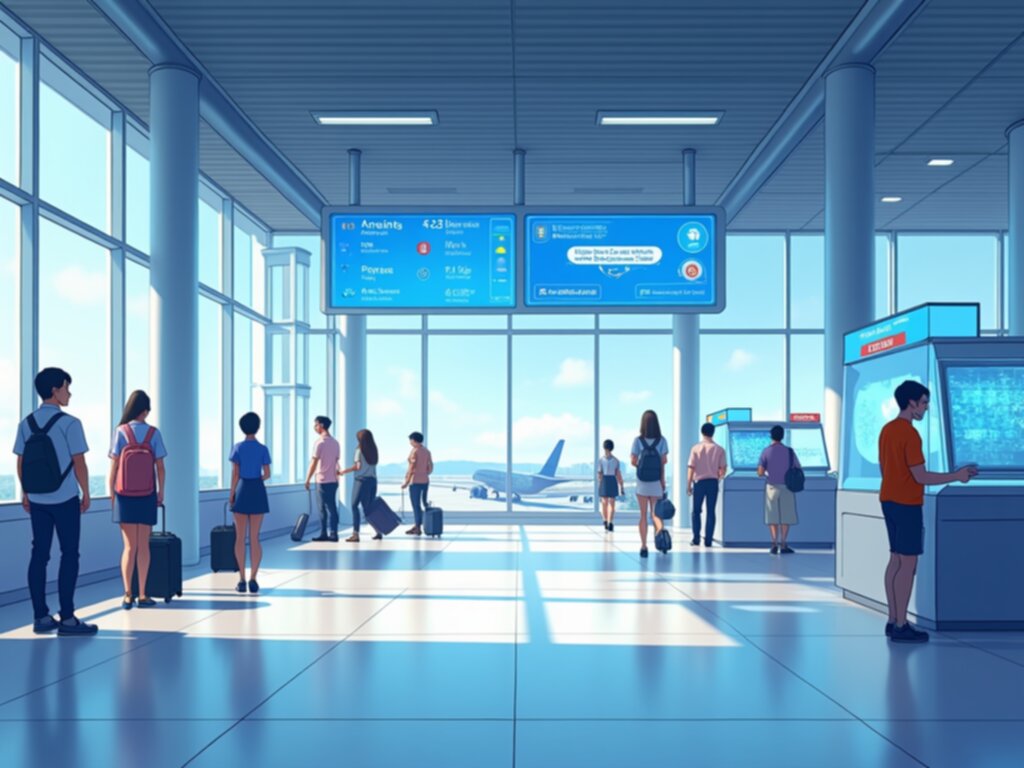7 Practical Strategies to Navigate Short Layovers and Minimize Connection Stress

The jolt of the aircraft wheels touching down often signals the beginning of a race against the clock, especially when the next boarding gate feels like it’s on another continent within the same terminal. We’ve all been there: staring at the connecting flight time displayed on the screen, calculating the seconds remaining versus the physical distance to Gate C42 when you just landed at Gate A15. This isn't just about mild inconvenience; for the frequent traveler, a short connection can mean the difference between an on-time arrival and an unplanned overnight stay in an airport lounge, an unwelcome expense and disruption to whatever itinerary lies ahead. My recent analysis of global airport efficiency data suggests that connection times under 45 minutes are statistically problematic for over 30% of passengers, even with optimized gate assignments.
I’ve spent considerable time mapping out the variables that influence successful tight connections, treating the airport as a complex, high-speed logistical puzzle. It’s not always the airline’s fault, nor entirely the passenger’s preparation; it’s often a confluence of unforeseen friction points, from immigration backlogs to baggage transfer delays. The key, I've found, lies in preemptive engineering of the journey—treating the transfer not as an afterthought, but as the primary objective once the first flight begins its descent. Let's examine some actionable steps derived from observing successful navigators of these compressed time windows.
The first area demanding rigorous attention is pre-flight intelligence gathering, which begins long before you book the itinerary itself. I strongly advise cross-referencing the arrival terminal and departure terminal for your connecting flight using independent airport mapping tools, not just the airline’s static schedule display. Sometimes, a 50-minute connection looks feasible on paper until you realize it requires traversing three security zones and two different terminals requiring a mandatory internal shuttle bus ride, which itself operates on a 10-minute headway. Furthermore, understanding the specific airport's protocol for missed connections is vital; some hubs are far more accommodating for rebooking than others, which changes the risk calculation entirely. If you are traveling internationally, meticulously check if your arrival country requires you to formally clear immigration and customs before transferring to a domestic or even a different international connection, a step that can easily consume 40 minutes alone during peak processing periods. Finally, ensure your carry-on luggage adheres strictly to size restrictions, because fumbling with an oversized bag at a security checkpoint is an amateur move that guarantees you lose precious minutes you cannot afford to spare.
Once airborne on the first leg, the focus shifts entirely to minimizing ground friction upon landing. My observation shows that passengers who engage the cabin crew early about a tight connection have a statistically higher success rate in being among the first off the aircraft. This isn't about demanding priority; it’s about politely informing them of your time constraint so they can potentially expedite deplaning procedures relevant to your row. Upon touching down, immediately consult real-time gate information displays, as minor gate changes happen frequently due to air traffic control or immediate gate availability issues. Do not wait for the baggage carousel information to update if you are carrying on your bags, as that information is irrelevant to your immediate path. If immigration or security is the known bottleneck, knowing the layout well enough to bypass the main queue, perhaps by identifying an expedited lane for specific passport holders or transit passengers, becomes your primary tactical advantage. Remember, every second spent stationary reviewing a map or waiting for a fellow passenger to retrieve their overhead bin item is a second you are not moving toward the next boarding door. Think of the airport transit as a timed obstacle course where preparation dictates survival.
More Posts from aiflightrefunds.com:
- →Top 7 Flight Delay Compensation Agencies A 2024 Performance Analysis
- →New EU Guidelines Clarify Compensation for 8+ Hour Flight Delays What Passengers Need to Know
- →Flight Delays Between 2-12 Hours What Passengers Need to Know About Their Rights
- →The Hidden Costs of Becoming an Airline Pilot Training Expenses Explained
- →Tying and Bundling in Airline Services Impact on Consumer Choice and Refund Policies
- →Istanbul Layover Maximizing Your Compensation Claims